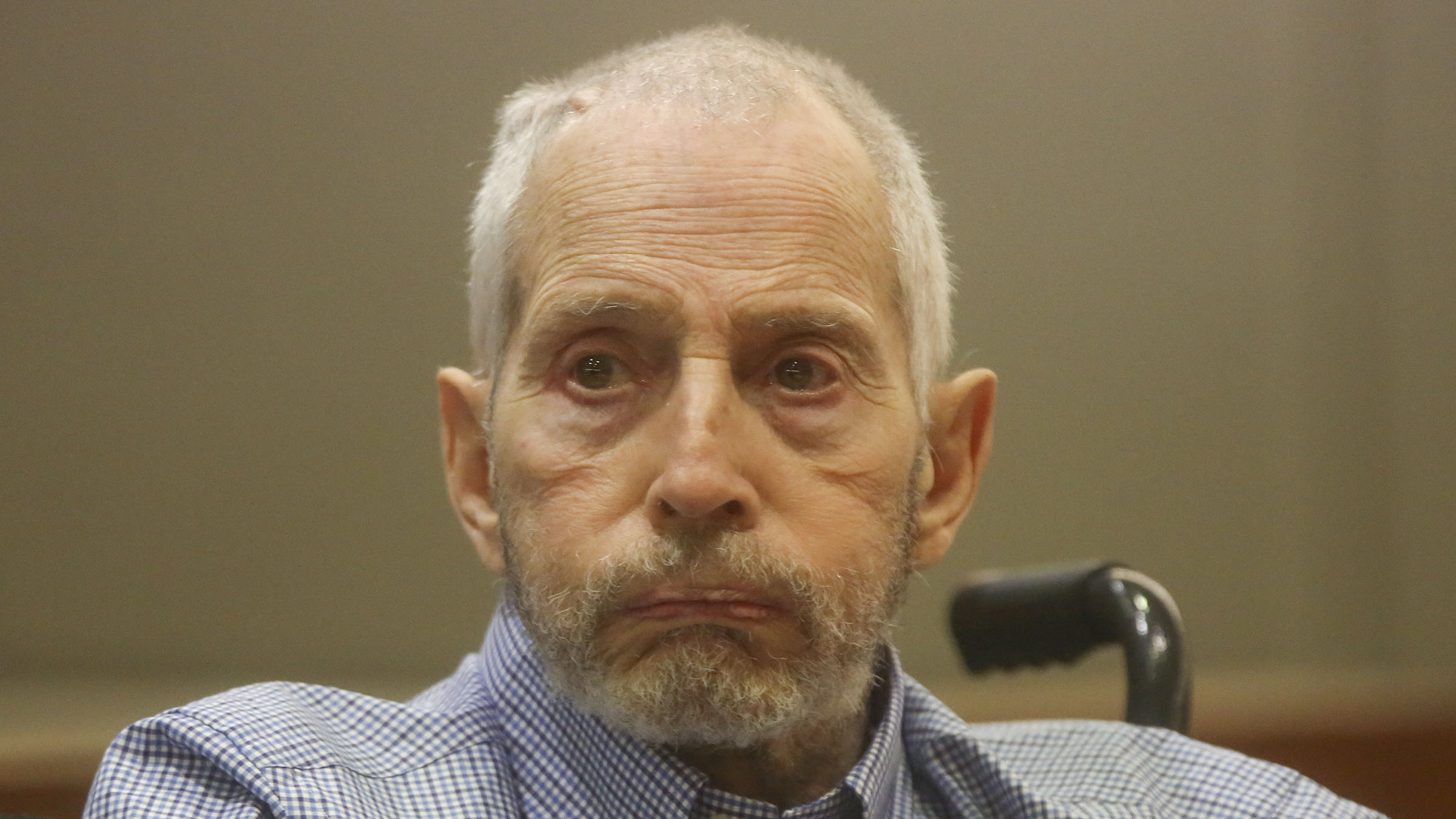
Activists who have long called for a ban on new county jail cells are set to rally downtown Tuesday in support of a proposed "care first, jails last'' county plan to put fewer people behind bars and invest in more community-based treatment.
Los Angeles County Supervisors Sheila Kuehl and Mark Ridley-Thomas met with reporters Monday to preview a motion to implement a broad set of alternatives to incarceration developed by a working group over the past year.
"The jails … are really our de facto mental health facilities,'' Kuehl said. "You can't get well in a cell.
"They are not equipped to provide the treatment that people need.''
Of the nearly 17,000 people in custody in Los Angeles County jails, the largest jail system in the nation, roughly 30% are in mental health housing because of a serious mental illness.
Of those, 21% have a substance abuse problem, according to the report by the Alternatives to Incarceration Work Group. Many of the report's strategies relate to scaling up more cost- effective community-based care for low-level offenders who might be worse off in jail and less likely to commit new crimes if they receive the right kind of support.
You can't talk about this issue of incarceration, you can't talk about the issue of homelessness and a whole range of other issues without coming to grips with the issue of racism head on,'' said Ridley-Thomas Los Angeles County Supervisor.
"It is cheaper to treat someone in a community than to treat them in a jail cell,'' said Dr. Robert Ross, CEO and president of The California Endowment. Some of this work is already underway through the county's Office of Diversion & Reentry and other existing county programs.
Since 2015, more than 4,600 people have been diverted from jail with county assistance -- including permanent supportive housing and a program designed specifically for pregnant women in custody. Ridley-Thomas said the report doesn't shy away from highlighting racism in a system that disproportionately incarcerates black residents in particular.
Though only 9% of county residents are black, blacks make up 29% of the jail population and nearly a third of the women's jail population. Ross said the board has the opportunity to lead national reform.
"This is an important historical moment not just for LA County, but the eyes of the nation will be watching LA County as we try to reform a system that has been defined too often by jail bars and barbed wire fences,'' Ross said.
For those who worry about safety, Peter Espinoza, a former Los Angeles County Superior Court judge who runs the Office of Diversion & Reentry, cited an earlier RAND Corporation study on diversion.
"This is not a strategy that is risky or a threat to public safety but in fact very much reduces the rate at which folks (commit new crimes),'' Espinoza said.
The plan focuses on several different "intercept points'' to keep people out of jail, ranging from someone's first encounter with law enforcement to a hearing before a judge -- suggesting new training, tactics and resources to change outcomes at each step.
An estimated 44% of jail inmates are awaiting trial and have not yet been convicted of any crime, so bail reform is one important strategy.
"You can't talk about this issue of incarceration, you can't talk about the issue of homelessness and a whole range of other issues without coming to grips with the issue of racism head on,'' Ridley-Thomas told reporters.
Another key recommendation is to create more "restorative villages'' that provide behavioral health support for patients who otherwise end up cycling through crowded emergency rooms without any ongoing treatment plan or landing in jail.
U.S. & World
News from around the country and around the globe
Such facilities are already planned at LAC and USC and Martin Luther King Jr. medical centers, but Ridley-Thomas and Ross envisioned building a broader network, perhaps on other county medical campuses.
Advocates who are typically vocal critics of the board hailed the report.
Eunisses Hernandez, co-executive director of La Defensa and a member of the workgroup, issued a statement calling it "a practical, yet powerful and visionary set of recommendations for how we could begin building out a decentralized community based system of care and housing first and foremost'' that "has set the golden standard of community and county partnership and collaboration.''
The open question is how the new strategies will inform the board's plans -- currently on hold -- to build a replacement for the downtown Men's Central Jail. Last August, in the face of broad opposition, the board backed out of a contract to rebuild the decrepit and outdated facility and have since focused on trying to make critical repairs.
Kuehl said she couldn't yet say how many fewer jail beds might be needed, but made her own goal clear.
"I want there to be less jail beds and more treatment beds,'' Kuehl said. "It is safer for society to do it that way.''
The RAND study concluded that roughly 60% of the jail mental health population -- which translates to about 18% of the total jail population -- could be safely diverted into community centers.
Ridley-Thomas said the report re-frames the conversation about what to build and to what scale. He also implied that the decision on actual jail construction could be on hold for long after he leaves the board this December.
"It will be a very long time before we figure out how to build a quote unquote jail,'' Ridley-Thomas said. "In the meantime, wisdom and excellent policy work suggests that there are other options that can be exercised that are more humane and more cost-effective, more fiscally prudent,'' he said. "So why wouldn't we do that rather than be stuck on old assumptions about what is necessary?''
While the details on implementing and funding the alternatives to jail across multiple county departments have yet to be worked out -- not to mention the vote of the rest of the board -- at least one community member was overcome with emotion at the possibilities.
Dolores Canales, community outreach director for The Bail Project and an advocate against solitary confinement, told reporters she spent more than 20 years behind bars because of a drug addiction. Her father spent half his life in prison and her son is serving a life sentence.
"My hope is soaring,'' Canales told reporters. "Because I cannot help but wonder what would have been the trajectory of my life if something like this would had been in place. My son, (who) is doing life in prison right now -- would it have been different if he didn't grow up in a prison playground?''



